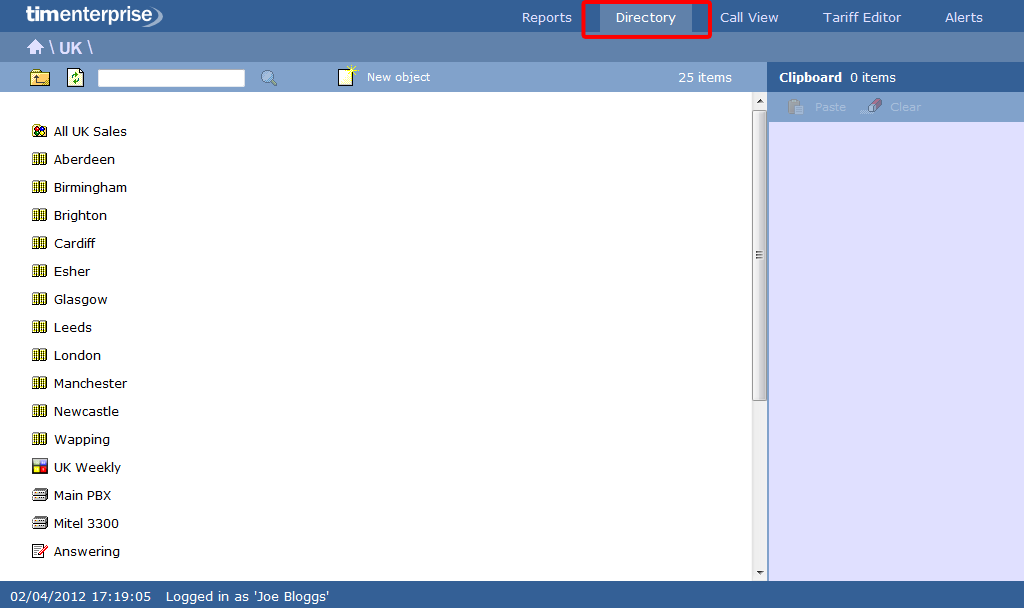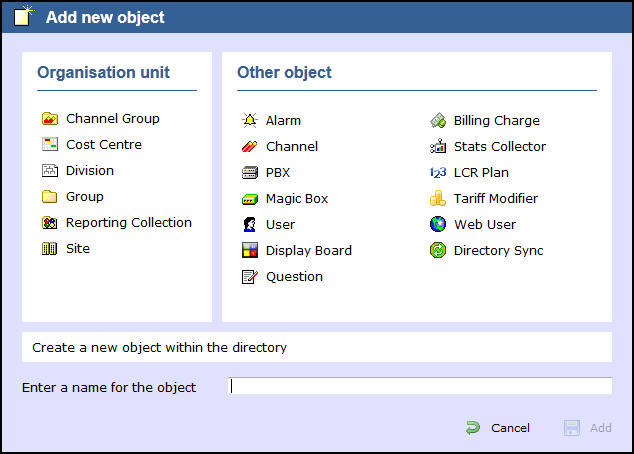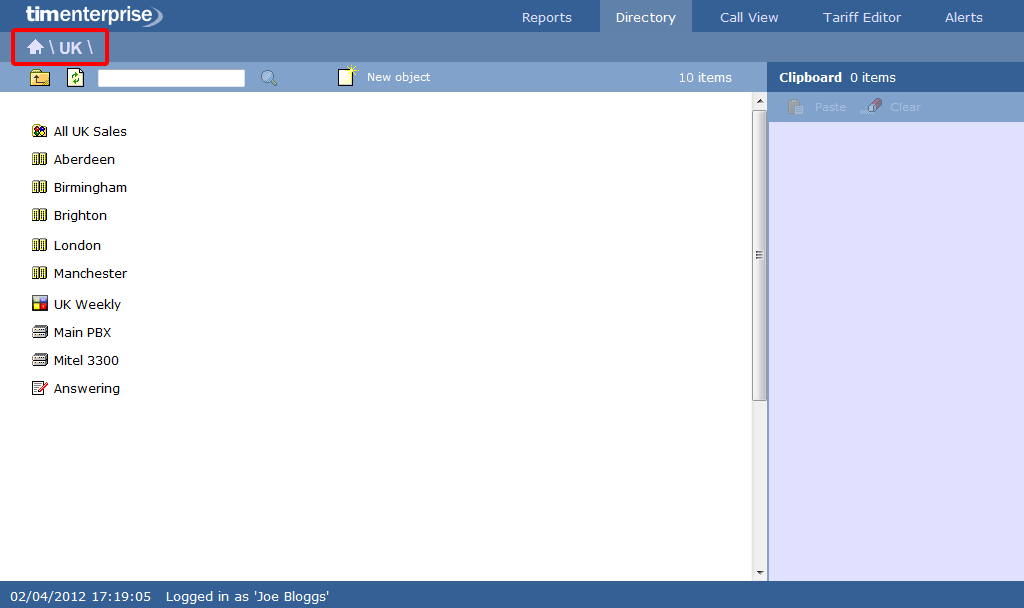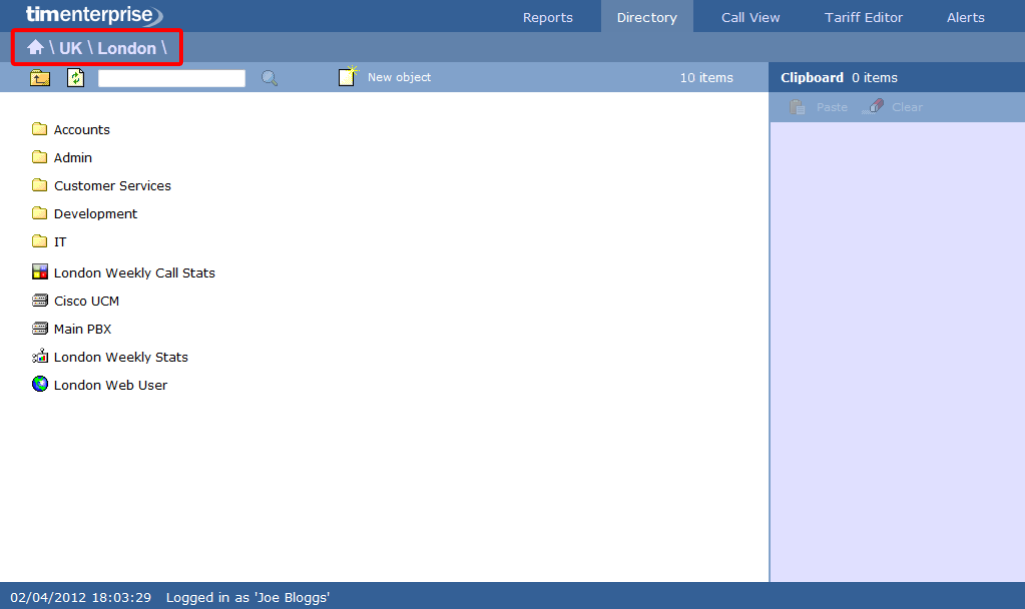Understanding the Directory
Directory overview
TIM Enterprise was designed upon an object-based directory that places no limits on its hierarchical width or depth. This approach permits the integration of multiple sites within one centralised system, allowing you to render, through objects arranged at different hierarchical levels, the actual structure of your company.
To facilitate the configuration and management of large systems, TIM Enterprise provides directory synchronisation with third-party applications such as Active Directory and Cisco AXL.
Each object can be placed anywhere in the Directory and it can serve different purposes. By defining relationships between these objects, the system becomes intelligent and can perform certain task automatically, e.g. reconcile calls across 'on-net' routes.
reporting collection..?
Accessing the Directory
To access the Directory, click on the tab from the main menu tab, as shown below:

If you are logged in as a standard web user whose access is restricted to a specific site or group, only the information related to that site or group will be displayed in the Directory. For administrative privileges, contact your system maintainer. |
Adding objects to the Directory
To add an object to the Directory, click on the tab, as shown below:

A new window will appear, displaying the available directory objects grouped in two categories: Organisation units and Other objects.

For a detailed description of each object type, refer to the relevant section.
The example below shows how a top level may appear in your Directory:

The example below shows how the next level may appear in your Directory:
